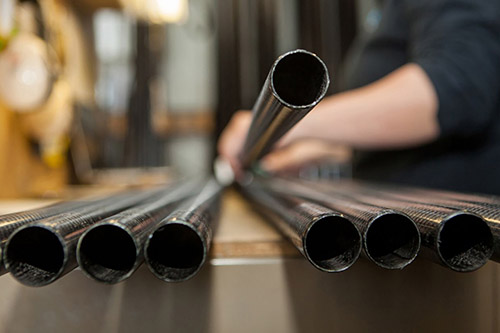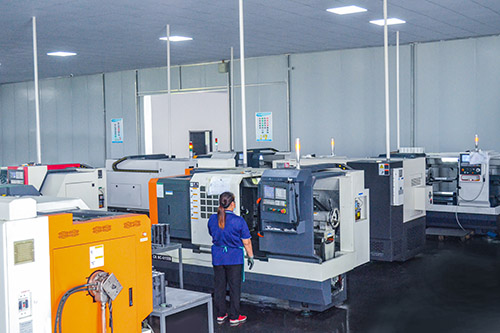Four common methods for making carbon fiber pipes
Date:2024-01-05Source:Views:

1. Winding process
The winding process is a process applicable to many pipes, which uses a continuous booth impregnated with resin, winds it into a new mode according to a certain pattern, and then solidifies it into carbon fiber products. The characteristic of this process is to produce some symmetrical carbon fiber pipes. Can be completed continuously, and the entire product size and shape can be well completed. More importantly, auxiliary equipment is needed to achieve better molding. There are also two types of processes in the process: wet forming and dry forming, with more emphasis on using wet forming because of the cost of wet forming.
2. Pultrusion process
The basic process of the pultrusion molding process is to extract the reinforcing fibers from the yarn frame, then pass through the bundle roller and enter the resin tank for soaking, then pass through the mold to remove excess resin, and then compact to remove bubbles. Then, the carbon fiber reinforcement and resin are formed and solidified in the molding mold, and finally pulled out of the desired length through the traction device. The carbon fiber tube is pulled out of the appropriate length.
3. Molding process
The molding process is more commonly used for square tubes. Compression molding is also a very common traditional molding process, which involves laying carbon fiber prepreg onto a mold through a layer, then feeding the mold into a hot press for curing and forming, followed by demolding and curing to obtain carbon fiber tubes. The molding process has high production efficiency and can quickly complete automated production. The surface of the entire carbon fiber pipe is smooth and can be mass produced. The main process of molding is mold preparation before molding, laying and pressing of raw materials.
4. Rolling process
The rolling process is similar to the molding process. In order to achieve better efficiency in production, the size of carbon fiber tubes is used to design prepreg layers and cut them. Then, the tubes are rolled by a rolling machine, and then sent to a hot pressing furnace for hot pressing forming. Finally, demolding is performed to obtain the appearance of carbon fiber.

